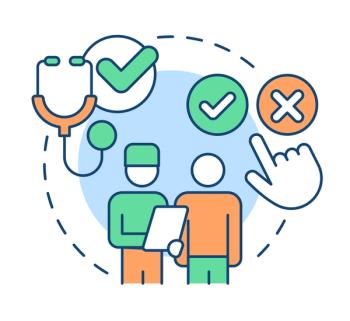
How to Achieve Healthcare Data Interoperability
Here’s how healthcare leaders can start driving their organizations to a more interoperable future.
While electronic health records (EHR) have become the norm for most healthcare organizations, the interoperability of those records between providers, patients, and payers still leaves much to be desired. It’s not simply a matter of incompatibility between platforms — although this presents its own problems — it’s also a problem of data and platform governance.
When it comes to data interoperability in healthcare, there are
This fragmentation of technologies and data formats not only prevents providers and other healthcare ecosystem participants from harnessing the full promise of a digital-first approach, it actively creates problems within the system. Information can vary from source to source, with no simple solutions for deciding which one is the most accurate, complete, or up-to-date. It makes seemingly simple things, like validating patient information requests, unnecessarily cumbersome and a potential security risk.
When data is scattered in different locations like this, an accurate and efficient system threatens to become an inefficient, unreliable mess. If healthcare interoperability challenges were just a matter of inconvenience, then it might not be enough to convince healthcare organizations to make a change. However, with the enaction of the
What this means is that interoperability is now more than a nice-to-have — it’s a necessity. With that in mind, here’s how healthcare leaders can start driving their organizations to a more interoperable future.
1. Focus on how data interoperability will enhance the patient experience.
Since the Cures Act places special emphasis on making patient information accessible, this is a good place to start. Standardized electronic health information (EHI) can make it easier for patients to safely provide their medical history to different providers or relevant professionals, allowing them to get the help they need without worrying about missing information.
By looking at interoperability through the lens of how it could improve patients' lives instead of as an administrative task, you gain a better picture of the practicality of interoperability and understand where your main focus should be.
2. Leverage the cloud.
The simple act of putting everything on one cloud platform can be a huge step toward better interoperability. By utilizing a single platform, you can tear down data silos, unlock powerful analytics, and use the tools offered by the cloud provider to create your own digital services for patients and employees.
A single provider can also help you improve both security and accessibility, offering a single sign-on solution for employees and making it easier to control who sees what data.
3. Advocate for cross-collaboration.
While you might face some competition locally, hospitals across the country don’t really pose a threat to your bottom line. So instead of viewing them as distant competition, start turning them into close collaborators.
By building a consensus around specific standards, you can significantly improve interoperability and have access to a wider pool of data that can help your clinicians and your patients. Implementing data interoperability in healthcare will require a commitment to change and a willingness to collaborate not only within your organization but among different providers, patients, and payers across the country. But the work will be worth it.
Putting together the puzzle pieces of interoperability will make it possible for clinicians to focus on diagnostics rather than data collection. It will put information at the fingertips of those who need it, when they need it, and facilitate precision treatment plans based on an ocean of data. In short, true interoperability has the potential to revolutionize the industry.
Newsletter
Get the latest industry news, event updates, and more from Managed healthcare Executive.






















































